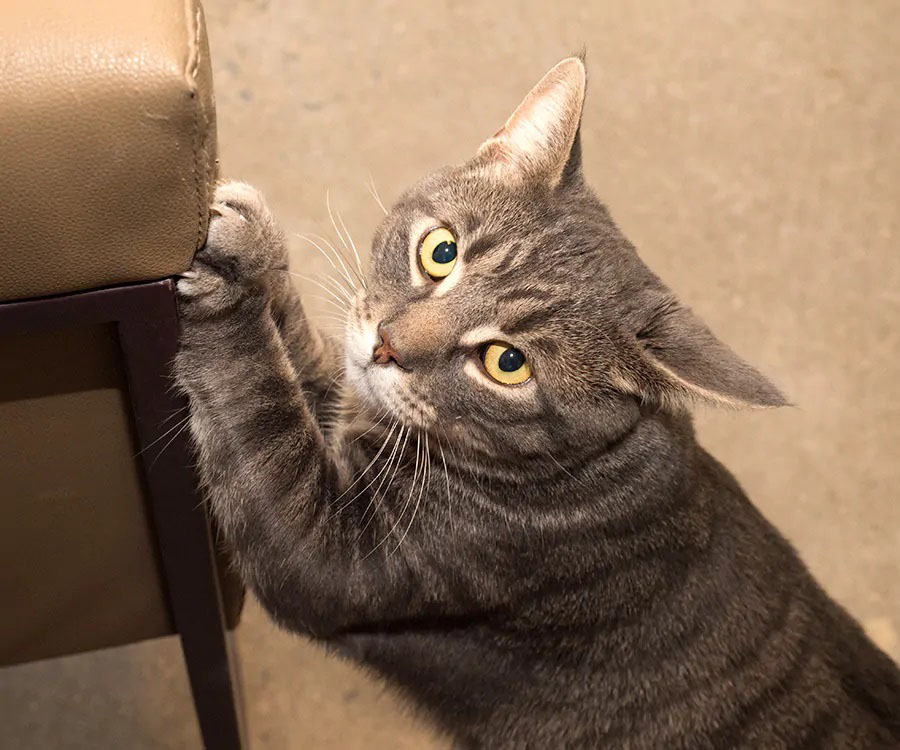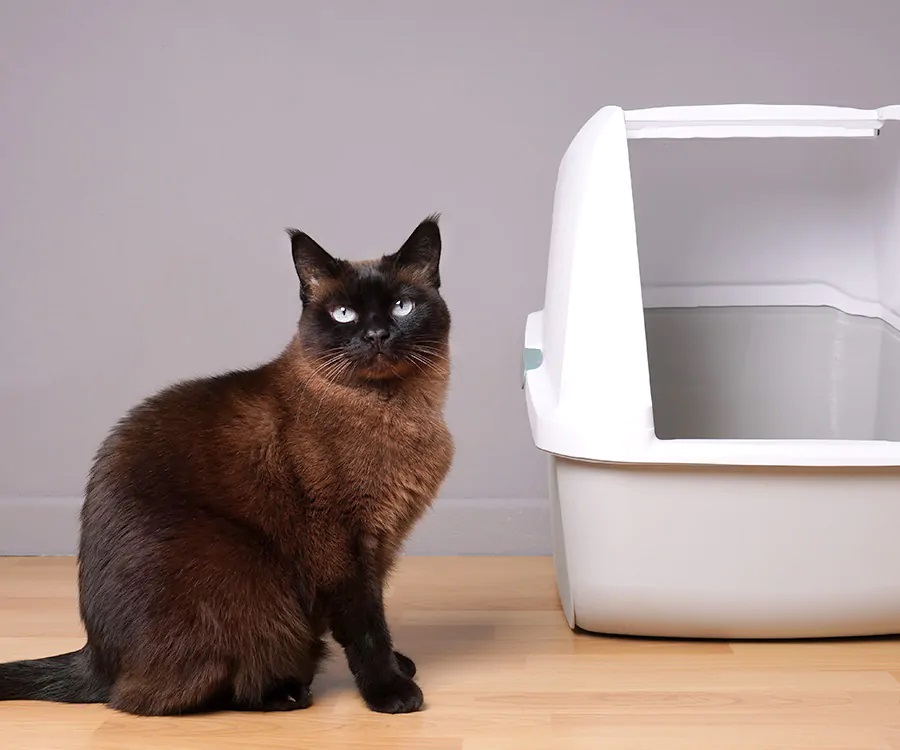Cat training can be as simple as making the wrong thing difficult and the right choice easy.
Scratching the furniture, jumping on the counter, and climbing the curtains: like it or not, these things are normal feline behavior. Cats have a natural, instinctual need to scratch, climb, and perch up high. Unfortunately, these types of behaviors often don't translate well to indoor living. Try to understand your cat's needs and give them an appropriate way to express them. Cat training can sound like a foreign language to some cat owners, but believe it or not, cats can be trained!
Start by taking a look at the behavior you don’t like. Let's say it's scratching the couch. Many cat owners are quick to tell the cat what not to do. Don't scratch the couch! The problem with this mindset is that it doesn’t take into account training your cat what you do want them to do instead. Don’t want your cat to scratch the couch? Your cat needs to scratch something. So what do you want them to scratch instead?

Cats need to scratch, so give them something other than the couch.
Reward, Rather than Punish
Whatever your training needs may be, be sure to follow the practice of rewarding your cat for good behavior, rather than punishing them for bad habits. With the proper training, your cat will learn that he gets a treat whenever he scratches on the cat tree instead of the furniture or sits on the window perch instead of the counter. Remember that if you want your cat not to scratch your couch, you need to provide him with something even better and more appealing to scratch.
Don't punish your cat in any way for what you consider to be misbehavior. Outbursts will just make your cat afraid of you. In general, cats don't understand punishment and are not able to make the connection that they’re being squirted with water because they did something wrong. Cat training is much more productive when you focus on good behavior and ignore or redirect behavior you find unacceptable.
For example, to address scratching the furniture, provide your cat with many different appropriate scratching options so that he has an abundance of things to choose from instead. If you catch him scratching something appropriate, give him lots of praise and treats! If you catch him scratching the couch, call his name or use a toy to encourage him to come over to the scratching post instead.
Addressing Litter Box Avoidance
If your cat suddenly uses the carpet instead of the litter box, it may be a distress signal that requires immediate medical attention. Potentially fatal lower urinary tract infections (LUTI) are often the culprit. In this instance, when your cat relieves herself, it hurts. He may conclude that the box is what is causing the pain and stop using it. A trip to the veterinarian will tell you whether or not you’re dealing with a physical problem.
If the problem is behavioral, try the following steps, a certain amount of cat training may be involved:
● Switch to an unscented, sandy-textured litter – it more closely mimics the outdoors.
● Make sure that your cat’s litter box is clean. Scoop out clumps daily and change non-clumping litter at least once a week.
● Make sure that the litter box is in a private, but easily accessible location.
● There should be at least one litter box per cat in your home, plus one extra.
● Try a bigger box. Your cat should be able to turn in a complete circle inside without touching any walls.
● If using a covered box, try switching to an uncovered one, instead.

The litter box should be in a private, but easily accessible location.
Managing Aggression
A biting or aggressive cat should be checked out by a veterinarian, first and foremost. Your pet may be reacting to pain. From there, addressing aggression at the root of the problem is the best method. You may need to train your cat to play appropriately and not use as many teeth and claws, for example. Or your cat may be stressed or scared. Working closely with a vet or behavior consultant may be necessary if you are unsure why your cat is behaving the way he is.
End Furniture Scratching
Furniture scratching is a natural feline behavior. They scratch to condition their claws, get exercise, mark territory, and simply because it’s fun! Remember, punishing your cat doesn’t work. Try these tips instead for productive cat training:
● Trim your cat’s claws regularly.
● Redirect energy toward a scratching post or a cardboard scratching pad.
● Praise your cat and give her a treat whenever you see her use the scratching post.
● Make your upholstered furniture less inviting by applying double-sided tape to the area where your cat scratches.
Other Annoying Habits
Wires and plants simply beg to be chewed but can become a deadly snack. Use cord protectors to hide wires safely out of reach, and put plants up high on shelves where your cat can’t get to them. As an added precaution, don't have plants in the home that may be poisonous to cats. You can give your cat toys or catnip sticks to chew on, and even offer him cat-safe plants like catnip or cat grass to gnaw on.
If your cat jumps up on the counter, give her an appropriate place like a perch or cat tree nearby to go to instead. Continue to reinforce that place instead by giving lots of treats and praise. In some instances, you may be able to use clicker training to train your cat to stay on the floor.
Your love, patience, and consistent training will go a long way to help manage your cat’s natural feline behaviors.

To keep your cat off the counter, provide a nearby perch and give her treats to reinforce that place.
Post time: Oct-26-2022
